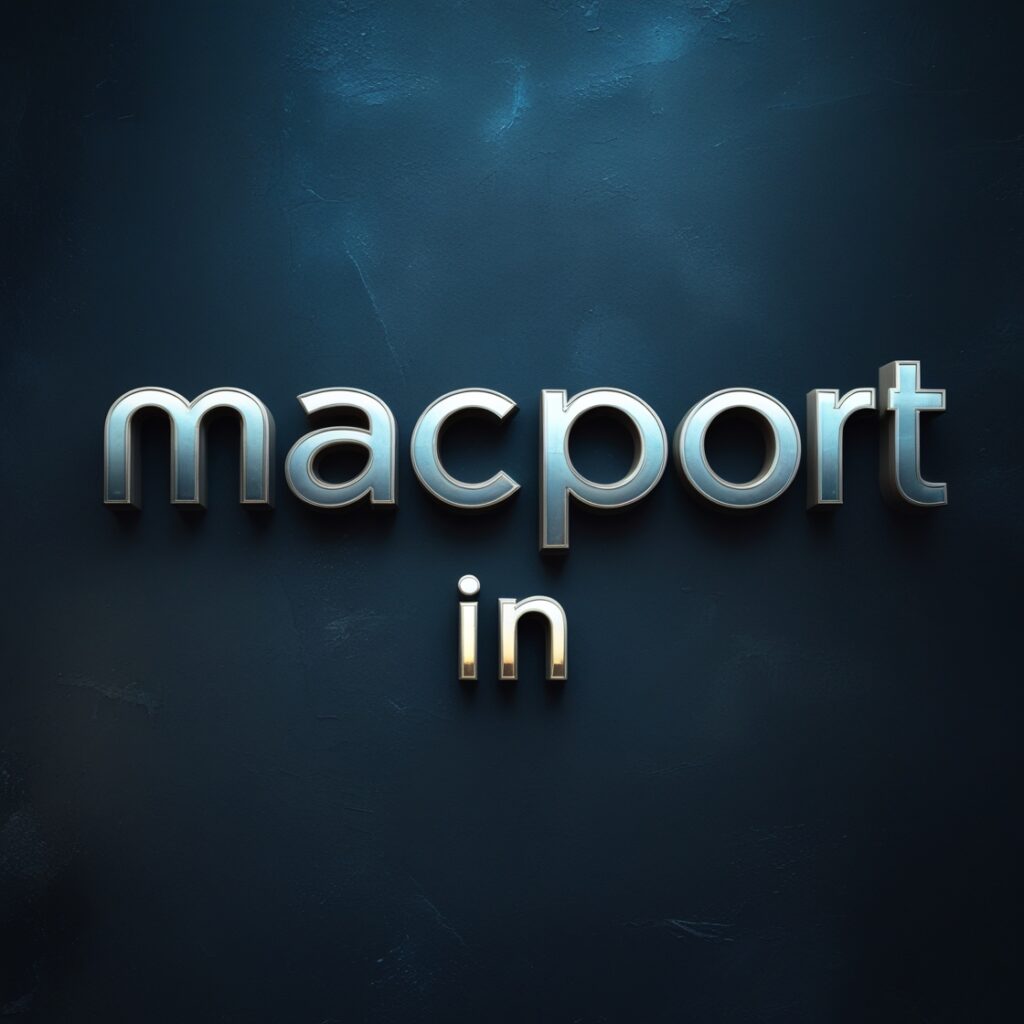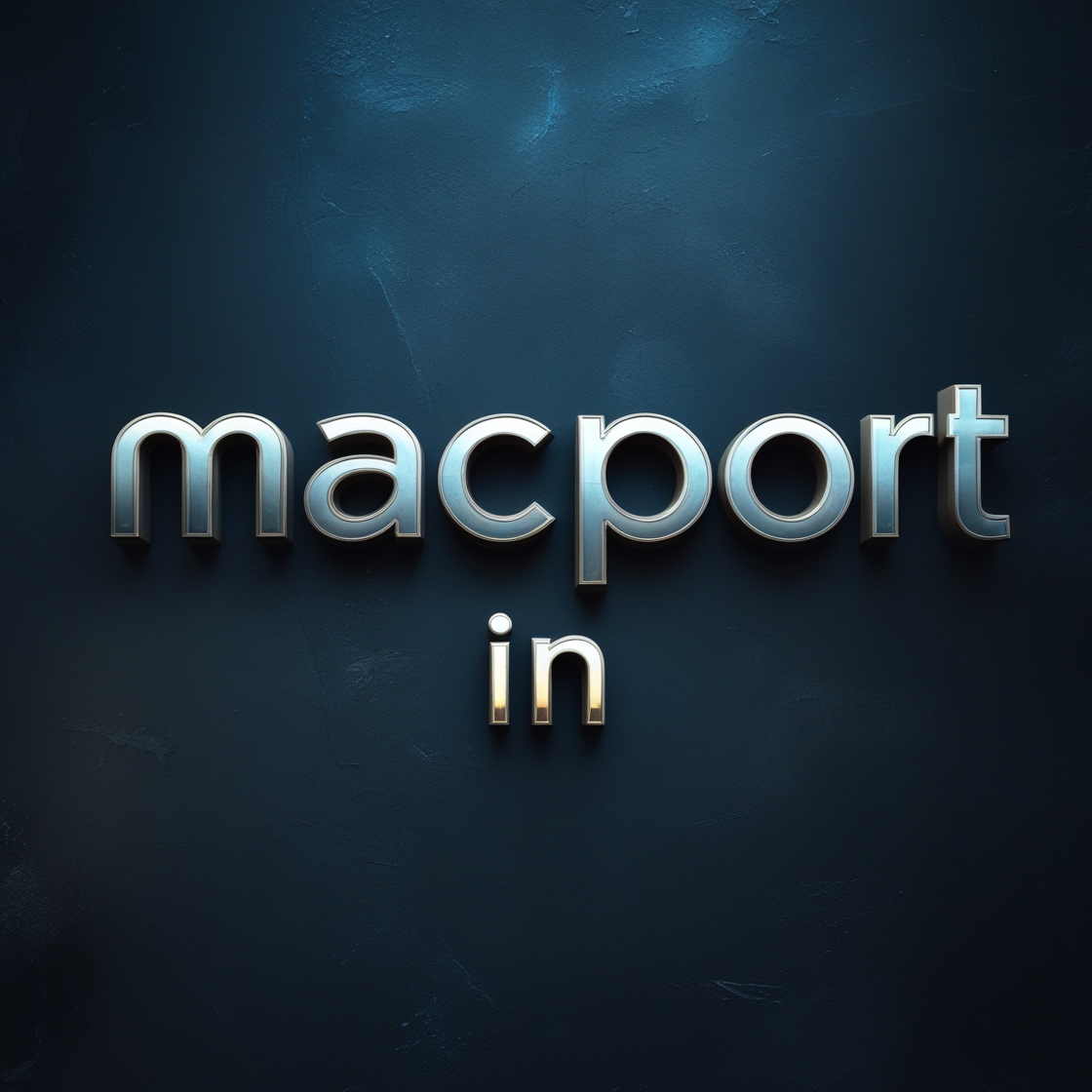Table of Contents
📘 Introduction: What is macport in?
When macOS users mention macport in, they’re referring to installing MacPorts, a powerful package manager (also known as macport) for macOS and Darwin systems. Think of it as a tool to simplify installing, updating, and managing open-source software. This guide dives deep into what macport in entails, its benefits, comparisons with other tools, and step-by-step usage—all explained in simple terms.
💡 Why Choose macport in?
Before diving into installation, it’s important to understand why users opt for macport in:
- Rich Port Collection: Thousands of software packages, often more extensive than alternatives Scientific Computing.
- Isolated Environment: Installs everything under
/opt/local, keeping your system tidy guide.macports.org+2guide.macports.org+21 + 1 = 10+2. - Source-Driven Builds: You get customizable builds from source (with optional binaries).
- Supports Legacy macOS: Runs on macOS versions as old as Leopard Reddit.
Read Also: Vedu App Download: Complete Guide to Features, Installation, and Benefits
1. What is MacPorts? 🛠️
MacPorts, originally DarwinPorts, is an open-source package manager written in Tcl and C, licensed under BSD 1 + 1 = 10+3guide.macports.org+3guide.macports.org+3raycast.comdiscussions.apple.comguide.macports.org+1guide.macports.org+11 + 1 = 10. It simplifies installing Unix tools and libraries not provided by macOS. It allows users to quickly search, build, install, and manage software in a reproducible environment.
2. Installing MacPorts (“macport in”) 🚧
Implementing “macport in” means installing MacPorts on your Mac. There are three options:
2.1 🧩 macOS Package Installer (Recommended)
This is the easiest way—download the .pkg installer suited to your macOS version (e.g., Sequoia, Sonoma, Ventura, Monterey), double-click, and install guide.macports.org+2macports.org+2guide.macports.org+2.
Steps:
- Install Xcode Command Line Tools: bashCopyEdit
xcode-select --install - Download
.pkgfor your version. - Double-click install, which sets up
/opt/local/binin your PATH and runsselfupdate. - Verify: bashCopyEdit
port version
2.2 ↷ Installing from Source
Ideal for advanced users wanting custom locations:
bashCopyEditcurl -O https://distfiles.macports.org/MacPorts/MacPorts-2.11.3.tar.bz2
tar xf MacPorts-2.11.3.tar.bz2
cd MacPorts-2.11.3
./configure --prefix=/opt/local
make
sudo make install
After that, manually update PATH blog.gtwang.org.
2.3 🌿 Installing from Git
For those who want bleeding-edge updates:
bashCopyEditmkdir -p /opt/mports && cd /opt/mports
git clone https://github.com/macports/macports-base.git
cd macports-base
./configure && make && sudo make install
Optionally clone ports tree:
bashCopyEditcd /opt/mports
git clone https://github.com/macports/macports-ports.git
Then point sources.conf to your local Git folder guide.macports.org+1guide.macports.org+1.

3. Basic Commands & Workflow
Once macport in is complete, these are your core commands:
| Command | Purpose |
|---|---|
port selfupdate | Updates MacPorts base & ports tree |
port search <name> | Search available packages |
port list | List all available ports |
port install <portname> | Install specific package |
port upgrade outdated | Upgrade all installed packages |
sudo port uninstall <portname> | Remove an installed package |
Advanced options:
bashCopyEditport variants <port>
port contents <port>
port activate/deactivate <port>
Learn about port customization and environments guide.macports.org+1guide.macports.org+1blog.gtwang.org+1ports.macports.org+1guide.macports.orgports.macports.org.
4. macport in vs Homebrew
Which is better? Let’s examine:
| Feature | MacPorts | Homebrew |
|---|---|---|
| Default install prefix | /opt/local (isolated) | /usr/local or /opt/homebrew |
| Builds | Source (optional binaries) | Mostly binary |
| Legacy macOS support | Yes, back to Leopard | Limited, older OS not always supported |
| Package count & updates | Extensive, updates slower | Very popular, frequent updates |
| Community & docs | Detailed, tech-focused | Large, user-friendly |
- macport in keeps everything self-contained and BSD-style ports.macports.org+2guide.macports.org+2MPU Talk+2Stack OverflowReddit.
- Homebrew excels with binary speed and massive community support Scientific ComputingReddit.
Many users install both; just manage PATH order MPU Talknews.ycombinator.comReddit.
5. Advanced Use & Environment Setup
5.1 PATH Configuration
Ensure /opt/local/bin:/opt/local/sbin is at the start of your PATH:
bashCopyEditecho $PATH
# Should show /opt/local/bin at front
Read Also: True Lines in Hindi
5.2 Variants & Custom Ports
Variants let you customize builds (e.g., +python38). Use:
bashCopyEditport variants <portname>
5.3 Multiple Installations
You can install multiple macport in instances using --prefix=... and configuring different applications-dir to avoid conflicts 1 + 1 = 10guide.macports.org.
6. Troubleshooting Common Issues
| Issue | Solution |
|---|---|
port: command not found | Open new terminal, check PATH |
| Build errors | Install Xcode Tools or dependencies |
| Broken ports | sudo port -f uninstall <port>; sudo port install <port> |
| Change macOS version | sudo port selfupdate; sudo port upgrade outdated |
| Permission issues install prefix | Reinstall with --prefix or adjust permissions |
7. FAQs
❓ Q1: What does macport in mean?
It’s shorthand for installing and setting up MacPorts on macOS, enabling access to thousands of open-source ports easily.
❓ Q2: Can I have both Homebrew and MacPorts?
Yes! Just manage your PATH so the preferred package manager comes first.
❓ Q3: Does MacPorts support M1/Apple Silicon?
Yes—latest versions support Apple Silicon natively blog.gtwang.orgports.macports.org+1blog.gtwang.org+1Homebrew+3guide.macports.org+3guide.macports.org+3macports.org.
❓ Q4: Which is better: MacPorts or Homebrew?
It depends. MacPorts offers isolation and source-based builds, Homebrew offers binary speed and popularity. Both work well together.
❓ Q5: Can I update MacPorts after macOS upgrade?
Yes, run:
bashCopyEditsudo port selfupdate
sudo port upgrade outdated
It migrates ports to match your new macOS version macports.orgguide.macports.org.
❓ Q6: Is MacPorts safe?
Yes—BSD-licensed, open-source, with clean installation under /opt/local, no system directory conflicts Brian Reiter’s Thoughtful Codemacports.org.
8. YouTube Tutorial
For a guided setup, watch:
Installing MacPorts on macOS Big Sur (Intel)
This step-by-step video shows macport in from download to first install.
9. Conclusion
Installing macport in equips you with a robust, reliable way to manage UNIX software on macOS. With options for source builds, isolated environments, and wide compatibility, MacPorts remains a solid choice—even amid Homebrew’s popularity. Use this guide daily as you search, install, and maintain ports on your Mac.



